Opinion & Analysis
A Study That Changed the Way Golfers Think About Wedges

Ever wonder: What’s the difference between my wedges and the ones used on the PGA Tour? The DNA is identical, but the actual clubs on tour are normally unique to each player.
More than any other type of club, the modern wedge was borne of and by the best professional golfers in the world. Its place in design results from the demands and navigation of the most difficult competitions and courses. But the obvious question of whether “tour wedges” are necessary or even suitable for average golfers may help shed light on our clubs in everyday use.
Commercially available, or “stock” wedges, are sold as essentially the same tools that tour professionals use, however, professional golfers have customized their wedges forever. Tour heads are naturally heavier to allow for the extra shaping. Players grind them to their liking in terms of sole, head shape and leading edge shapes. Generally, measurements have less importance than how the club looks or how the wedge works with their game. Specifications get recorded after modifications have been made. Manufacturers use the tour prototypes to share with the public the same basic equipment as the best players in the world use, but often the modified “one-off” clubs aren’t exactly the same as the final products found on the shelves.
At the heart of the matter: THE BOUNCE, or the angle of the sole plane relative to the ground plane, has always been a source of disagreement and debate. It used to be a widely held belief that tour players used wedges with extremely low bounce values. The perception was that the better the player, the less bounce was required and vice versa. While that may have been true in a few limited cases, normally clubs with low bounce angles had wider soles. Another way of saying that is the distance from the leading edge to the trailing edge was longer.

A wider sole acts like it has more bounce, and it does when the player opens the face. The leading edge of the club lifts higher off the ground when the sole is wider, acting like extra bounce. Another wedge contour called “camber,” the roundness of the sole from the leading edge to the back of the sole, can substitute for additional bounce.
Whether genius or completely misguided, wedge manufacturers regularly published bounce values that were substantially different from the absolute values found on the clubs themselves. Even as recent as 1998, conventional wisdom regarding the amount of bounce used by PGA Tour players in so-called lob wedges was about 3 degrees. We now know that this was laughable. Better players are steeper… yes? So why would they use wedges with knife-like leading edges and soles? They wouldn’t with the exceptions of a few very rare cases. It turned out to be urban legend.
Typically, a very low bounce angle would incorporate a wider sole and more camber (roundness) to counter the effects of a flatter bounce angle. Wider soles act like added bounce, especially with an open face. These features are commonly found in so-called “game improvement” wedges for average golfers like Callaway’s Sure Out or the XE-1… you know, the one from the infomercial on Golf Channel.
Early on in my career at Cleveland Golf (I worked for Cleveland as The Senior Designer from 1998-2004 and consulted with them until 2009), we discovered that our documentation (brochures and other collateral materials) reflected inaccurate wedge bounce specifications. This was true of both consumer and “tour-only” products. Upon learning of these discrepancies, Cleveland Golf CEO Greg Hopkins (founder and owner of Hopkins Golf) dispatched me, a Cleveland consultant at the time, to travel the U.S. professional tours to measure and document all of the sole properties of every wedge in use in American professional golf. This was a gigantic undertaking involving more than 1,000 golf clubs. Over the course of several months, I traveled to PGA, LPGA, Champions and Web.com tours to measure wedges and document everything in a master database. We considered anything north of 45 degrees loft to be a wedge.
My Measurements
- Bounce Angle (in three places): Toe, heel and center.
- Sole Width (in three places): Toe, heel and center.
- Rocker Radius: The roundness from heel to toe.
- Camber Radius: The rounded contour from the leading edge to the back flange.
- Leading Edge Roll: The sharpness or dullness of the leading edge.
- Every Player Was Asked the Question: “Which loft is your primary sand club?”
Before this study, the task of creating tour wedges was something of a “black art.” It was iterative and often wasteful. We often had to custom fabricate many wedges for a player to get one in their hands. The results of the study might well have been one of the most revealing research projects in the history of the game. As a company, we were no longer guessing; we knew what wedges professional golfers needed and used, and it made our job a lot easier. We now had a primmer and a robust template to go by.
Through the study, we discovered the average loft progression for three-wedge sets was a six-degree spread: 47, 53 and 59 degrees. Almost no one played with a stock 56-degree sand wedge unless it was part of a four-wedge set, which was rare. The 56-degree wedges were normally bent to 54 degrees, and usually much of their flanges had been ground off usually to make them narrower (it should be noted that doing that actually INCREASES the measured bounce angle). The most common four-wedge loft progression was 46, 51, 54-55 and 59-60 degrees. We also saw many “pitching wedges” that were not matched to the iron sets. These didn’t look like 10 irons, but more like real wedges.
Finally, we learned that the vast majority of PGA Tour players had one wedge with higher relative bounce and one with lower relative bounce.
RELATIVE BOUNCE DEFINITION: If two wedges have identical sole properties (bounce angle, sole width, leading edge roll, camber radius and so on), the higher-lofted wedge will dig more and the lower-lofted wedge will act as though it has more bounce potential.
And most EXPLOSIVE of all, we learned that the average lob wedge (58-60 degrees) had 12 degrees of bounce angle. At the time it was stunning, to put it mildly. These high-bounce lob wedges were being used as the go-to primary sand clubs for the best players in the world. The so-called “sand wedge” (a 56-degree wedge with about 14 degrees of bounce) had become all but a dinosaur. The modern primary sand club has about 59 degrees of loft and 12 degrees of bounce.
The results of the research effort gave birth to several new concepts and a complete cultural change in Cleveland’s wedge programs. I like to believe that this was a paradigm for the entire industry at large, and we had contributed to the game.
- We rid wedges of letters SW, DW, PW, and LW in lieu of loft numbers.
- We conceived, developed and documented the concept of “net bounce,” a mathematical algorithm that predicted and derived sole specifications (bounce angle, sole width, camber and so on) for new wedge products at any loft. That is a part of the wedge development doctrine at Cleveland Golf to present day.
- We introduced the concept of multiple bounce options for any loft, known as the “Dot” system. Shortly afterwards, almost all other golf companies followed suit.
- Internally, we started to use the vernacular “primary sand club” with all of our fitting programs and wedge packages. And this was the way we communicated that to the tour as well.
We essentially changed the definition of what a sand wedge was. The subliminal connotation was that there were several sand clubs, not one dedicated to the purpose. Of course, we all now view sand play as achieved by using several different wedges. Within the context of the wedge business at the time, this was a very disruptive and pioneering set of actions, but we were only following the lead of what the tour was already doing.
Interestingly, wedges never really fit into the concept of the matched set. While the design of a wood or iron set with a “family-like” progression of features seems pretty straightforward, wedges don’t fit that mold no matter how similar the shape to its iron siblings. Average golfers mistakenly identify wedges as the shorter end of the iron set, basically the 10-13 irons. Well, IRONS they’re not! Wedges are in a class all by themselves. They are definitely not irons in the same way that hybrids are not fairway woods. As a matter of fact, modern wedges share more in common with putters than irons.
In the first place, wedges are used in a tactical way. Think of the difference of “tactical” versus “strategic.” A driver, fairway wood or long iron deliver more strategic results…in other words, long-range targeting to a larger area. Tactical means close in targeting to a smaller area.
Wedges facilitate delicate distance control because of their weight, high loft values, low centers of gravity and deep faces. Because of the large surface area of the faces, wedges offer a diversity of points which to strike the ball and get varying results. Furthermore, with the roundness of their leading edges and often their little offset — or even onset faces — wedges allow their faces to be opened substantially without the hosel getting in the way. Opening the face increases the loft for higher short range shots and increases the bounce potential of the wedge. Complex geometry of the sole lets the user orient the wedge with a diversity of setups. Large cuts on the toe or heal called “shelving” facilitate a more vertical or flatter setup by the golfer depending on the need.
Wedges have been likened to an artists’ paint brush or knights on a chess board. Similar to an artist’s paint brush, wedges are used differently than other clubs and produce shots differently every single time they are used. These are the tools of skillful golfing artisans. And like the adept use of the knights in chess, wedges deliver an obscure and invented type of shot, yet deadly results that confound the competition who has limited understanding of this part of the game.
Indeed the wedge game has become the modern signature of the very best players in the world. And if you think about it, it makes total sense. The modern wedge was developed with professional golf in mind.
Opinion & Analysis
The 2 primary challenges golf equipment companies face

As the editor-in-chief of this website and an observer of the GolfWRX forums and other online golf equipment discourse for over a decade, I’m pretty well attuned to the grunts and grumbles of a significant portion of the golf equipment purchasing spectrum. And before you accuse me of lording above all in some digital ivory tower, I’d like to offer that I worked at golf courses (public and private) for years prior to picking up my pen, so I’m well-versed in the non-degenerate golf equipment consumers out there. I touched (green)grass (retail)!
Complaints about the ills of and related to the OEMs usually follow some version of: Product cycles are too short for real innovation, tour equipment isn’t the same as retail (which is largely not true, by the way), too much is invested in marketing and not enough in R&D, top staffer X hasn’t even put the new driver in play, so it’s obviously not superior to the previous generation, prices are too high, and on and on.
Without digging into the merits of any of these claims, which I believe are mostly red herrings, I’d like to bring into view of our rangefinder what I believe to be the two primary difficulties golf equipment companies face.
One: As Terry Koehler, back when he was the CEO of Ben Hogan, told me at the time of the Ft Worth irons launch, if you can’t regularly hit the golf ball in a coin-sized area in the middle of the face, there’s not a ton that iron technology can do for you. Now, this is less true now with respect to irons than when he said it, and is less and less true by degrees as the clubs get larger (utilities, fairways, hybrids, drivers), but there remains a great deal of golf equipment truth in that statement. Think about it — which is to say, in TL;DR fashion, get lessons from a qualified instructor who will teach you about the fundamentals of repeatable impact and how the golf swing works, not just offer band-aid fixes. If you can’t repeatably deliver the golf club to the golf ball in something resembling the manner it was designed for, how can you expect to be getting the most out of the club — put another way, the maximum value from your investment?
Similarly, game improvement equipment can only improve your game if you game it. In other words, get fit for the clubs you ought to be playing rather than filling the bag with the ones you wish you could hit or used to be able to hit. Of course, don’t do this if you don’t care about performance and just want to hit a forged blade while playing off an 18 handicap. That’s absolutely fine. There were plenty of members in clubs back in the day playing Hogan Apex or Mizuno MP-32 irons who had no business doing so from a ballstriking standpoint, but they enjoyed their look, feel, and complementary qualities to their Gatsby hats and cashmere sweaters. Do what brings you a measure of joy in this maddening game.
Now, the second issue. This is not a plea for non-conforming equipment; rather, it is a statement of fact. USGA/R&A limits on every facet of golf equipment are detrimental to golf equipment manufacturers. Sure, you know this, but do you think about it as it applies to almost every element of equipment? A 500cc driver would be inherently more forgiving than a 460cc, as one with a COR measurement in excess of 0.83. 50-inch shafts. Box grooves. And on and on.
Would fewer regulations be objectively bad for the game? Would this erode its soul? Fortunately, that’s beside the point of this exercise, which is merely to point out the facts. The fact, in this case, is that equipment restrictions and regulations are the slaughterbench of an abundance of innovation in the golf equipment space. Is this for the best? Well, now I’ve asked the question twice and might as well give a partial response, I guess my answer to that would be, “It depends on what type of golf you’re playing and who you’re playing it with.”
For my part, I don’t mind embarrassing myself with vintage blades and persimmons chasing after the quasi-spiritual elevation of a well-struck shot, but that’s just me. Plenty of folks don’t give a damn if their grooves are conforming. Plenty of folks think the folks in Liberty Corner ought to add a prison to the museum for such offences. And those are just a few of the considerations for the amateur game — which doesn’t get inside the gallery ropes of the pro game…
Different strokes in the game of golf, in my humble opinion.
Anyway, I believe equipment company engineers are genuinely trying to build better equipment year over year. The marketing departments are trying to find ways to make this equipment appeal to the broadest segment of the golf market possible. All of this against (1) the backdrop of — at least for now — firm product cycles. And golfers who, with their ~15 average handicap (men), for the most part, are not striping the golf ball like Tiger in his prime and seem to have less and less time year over year to practice and improve. (2) Regulations that massively restrict what they’re able to do…
That’s the landscape as I see it and the real headwinds for golf equipment companies. No doubt, there’s more I haven’t considered, but I think the previous is a better — and better faith — point of departure when formulating any serious commentary on the golf equipment world than some of the more cynical and conspiratorial takes I hear.
Agree? Disagree? Think I’m worthy of an Adam Hadwin-esque security guard tackle? Let me know in the comments.
@golfoncbs The infamous Adam Hadwin tackle ? #golf #fyp #canada #pgatour #adamhadwin ? Ghibli-style nostalgic waltz – MaSssuguMusic
Podcasts
Fore Love of Golf: Introducing a new club concept

Episode #16 brings us Cliff McKinney. Cliff is the founder of Old Charlie Golf Club, a new club, and concept, to be built in the Florida panhandle. The model is quite interesting and aims to make great, private golf more affordable. We hope you enjoy the show!
Opinion & Analysis
On Scottie Scheffler wondering ‘What’s the point of winning?’

Last week, I came across a reel from BBC Sport on Instagram featuring Scottie Scheffler speaking to the media ahead of The Open at Royal Portrush. In it, he shared that he often wonders what the point is of wanting to win tournaments so badly — especially when he knows, deep down, that it doesn’t lead to a truly fulfilling life.
View this post on Instagram
“Is it great to be able to win tournaments and to accomplish the things I have in the game of golf? Yeah, it brings tears to my eyes just to think about it because I’ve literally worked my entire life to be good at this sport,” Scheffler said. “To have that kind of sense of accomplishment, I think, is a pretty cool feeling. To get to live out your dreams is very special, but at the end of the day, I’m not out here to inspire the next generation of golfers. I’m not out here to inspire someone to be the best player in the world, because what’s the point?”
Ironically — or perhaps perfectly — he went on to win the claret jug.
That question — what’s the point of winning? — cuts straight to the heart of the human journey.
As someone who’s spent over two decades in the trenches of professional golf, and in deep study of the mental, emotional, and spiritual dimensions of the game, I see Scottie’s inner conflict as a sign of soul evolution in motion.
I came to golf late. I wasn’t a junior standout or college All-American. At 27, I left a steady corporate job to see if I could be on the PGA Tour starting as a 14-handicap, average-length hitter. Over the years, my journey has been defined less by trophies and more by the relentless effort to navigate the deeply inequitable and gated system of professional golf — an effort that ultimately turned inward and helped me evolve as both a golfer and a person.
One perspective that helped me make sense of this inner dissonance around competition and our culture’s tendency to overvalue winning is the idea of soul evolution.
The University of Virginia’s Division of Perceptual Studies has done extensive research on reincarnation, and Netflix’s Surviving Death (Episode 6) explores the topic, too. Whether you take it literally or metaphorically, the idea that we’re on a long arc of growth — from beginner to sage elder — offers a profound perspective.
If you accept the premise literally, then terms like “young soul” and “old soul” start to hold meaning. However, even if we set the word “soul” aside, it’s easy to see that different levels of life experience produce different worldviews.
Newer souls — or people in earlier stages of their development — may be curious and kind but still lack discernment or depth. There is a naivety, and they don’t yet question as deeply, tending to see things in black and white, partly because certainty feels safer than confronting the unknown.
As we gain more experience, we begin to experiment. We test limits. We chase extreme external goals — sometimes at the expense of health, relationships, or inner peace — still operating from hunger, ambition, and the fragility of the ego.
It’s a necessary stage, but often a turbulent and unfulfilling one.
David Duval fell off the map after reaching World No. 1. Bubba Watson had his own “Is this it?” moment with his caddie, Ted Scott, after winning the Masters.
In Aaron Rodgers: Enigma, reflecting on his 2011 Super Bowl win, Rodgers said:
“Now I’ve accomplished the only thing that I really, really wanted to do in my life. Now what? I was like, ‘Did I aim at the wrong thing? Did I spend too much time thinking about stuff that ultimately doesn’t give you true happiness?’”
Jim Carrey once said, “I think everybody should get rich and famous and do everything they ever dreamed of so they can see that it’s not the answer.”
Eventually, though, something shifts.
We begin to see in shades of gray. Winning, dominating, accumulating—these pursuits lose their shine. The rewards feel more fleeting. Living in a constant state of fight-or-flight makes us feel alive, yes, but not happy and joyful.
Compassion begins to replace ambition. Love, presence, and gratitude become more fulfilling than status, profits, or trophies. We crave balance over burnout. Collaboration over competition. Meaning over metrics.
Interestingly, if we zoom out, we can apply this same model to nations and cultures. Countries, like people, have a collective “soul stage” made up of the individuals within them.
Take the United States, for example. I’d place it as a mid-level soul: highly competitive and deeply driven, but still learning emotional maturity. Still uncomfortable with nuance. Still believing that more is always better. Despite its global wins, the U.S. currently ranks just 23rd in happiness (as of 2025). You might liken it to a gifted teenager—bold, eager, and ambitious, but angsty and still figuring out how to live well and in balance. As much as a parent wants to protect their child, sometimes the child has to make their own mistakes to truly grow.
So when Scottie Scheffler wonders what the point of winning is, I don’t see someone losing strength.
I see someone evolving.
He’s beginning to look beyond the leaderboard. Beyond metrics of success that carry a lower vibration. And yet, in a poetic twist, Scheffler did go on to win The Open. But that only reinforces the point: even at the pinnacle, the question remains. And if more of us in the golf and sports world — and in U.S. culture at large — started asking similar questions, we might discover that the more meaningful trophy isn’t about accumulating or beating others at all costs.
It’s about awakening and evolving to something more than winning could ever promise.


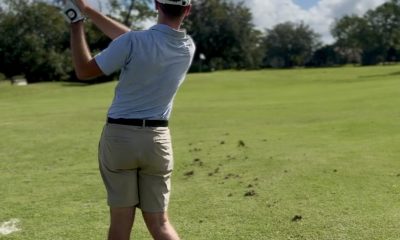

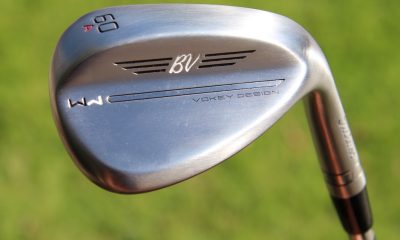

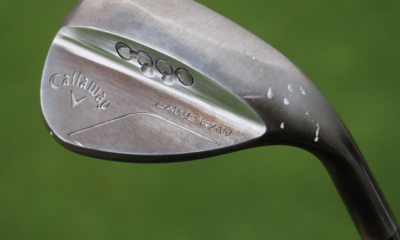

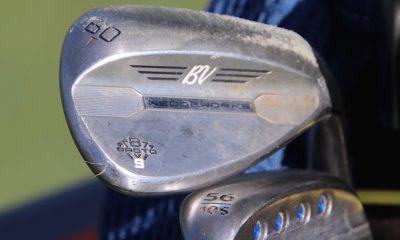



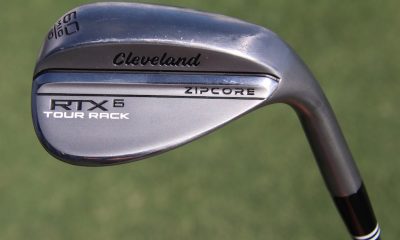









Tony Wright
Jul 11, 2017 at 12:29 pm
Don an absolutely great article thank you. Unless I missed it, I do not see any discussion about the shafts used in tour wedges. Do tour players use the same shafts in their wedges as they use in their irons? If not why not, and what are the trends? Would love to hear your thoughts on this thanks.
Don Wood
Jul 12, 2017 at 4:06 pm
Thank you Tony!
As a general rule, shafts in tour wedges typically get a little softer. Wedge shafts can be basically “8 iron” shafts. But because the wedges have heavier head weights, the flex is softer. That’s not true for all as some tour players want their wedges to be the stiffest ones in the bag. And the wedges are almost always steel…even if the player has mostly graphite throughout the bag.
Golf Code Weekly
Jun 20, 2017 at 9:24 am
What a great article!
That was the most educational thing i have read in a long time, really interesting to learn about this stuff from someone who clearly knows a lot
thanks!
Bill
Jun 19, 2017 at 3:27 pm
Please ignore trolls ooffa and SH. The discussion is informative.
Don Wood
Jun 19, 2017 at 11:11 pm
Thanks Bill,
Trolls are a very important part of our society these days. Their numbers…or lack of them tell a lot about the vulnerability of what we say. Golf Trolls Are people too. And if they cannot contribute to our game, they at least have the desire to be a part of the discussion. Let’s give em a break.
ooffa
Jun 21, 2017 at 8:52 pm
I’m sorry I didn’t mean “often incorrect”.
I meant to say always.
tazz2293
Jun 18, 2017 at 8:32 pm
Thanks for the article Don.
Very informative and a great lesson.
ooffa
Jun 18, 2017 at 6:14 pm
ZZZZZZZzzzzzzz
Hack
Jun 18, 2017 at 2:51 am
1. Trial and error. You’re gonna have to own several lofts and bounces and rotate them according to what you’re going to encounter that day.
2. 1968? Well they had, basically, rubber balls back then. Rubber could grip the surface, if the surface is sticky-clean enough, and won’t need too many grooves to get spin. Think in terms of Table-Tennis. Flat surface of rubber against plastic balls – the balls spin plenty from the friction (given that the balls are, yes, very light, but still the principle is the same). Modern balls are hard, even with urethane, and need grooves to spin them. But then again, that is why we got rid of square grooves, as those were grabbing the ball and spinning them too much
Don Wood
Jun 17, 2017 at 8:51 pm
Hello Bubba,
Thank you for your question.
I had driving range access and knew many of the players and player reps.
Most of the time the players were pretty accommodating and didn’t mind a few measurements. All but a small handful had no objections. The other manufacturers really didn’t get the full understanding of what we were doing as it may have gone unreported by their player reps.
Net bounce became important because a nominal bounce angle measurement wasn’t a reliable indicator of how the sole would behave without knowing its other properties. Also, a single measurement in the center isn’t indicative of the behavior of the sole on various types of shots.
I’m not at all surprised at the bounce readings of your wedge.
bounce
Jun 17, 2017 at 1:44 pm
Don, I don’t understand how grinding off the flange increases bounce angle? Wouldn’t the bounce angle stay the same, unless part of the high point of the camber was ground down? Can you help me understand that. thanks.
“The 56-degree wedges were normally bent to 54 degrees, and usually much of their flanges had been ground off usually to make them narrower (it should be noted that doing that actually INCREASES the measured bounce angle).”
Don Wood
Jun 17, 2017 at 8:56 pm
Thank you for your question.
The answer has to do with the camber or the roundness from leading edge to back of the flange edge.
Bounce angle is measured from a tangent at the center of the sole equidistant to the edges of the leading and trailing edges. And so if one of these edges is moved towards the center as a result of grinding, the tangential center point migrates to the opposite side…along the arc of the camber.
bounce
Jun 17, 2017 at 10:30 pm
Ok that explains it. But if you measure it that way, how is knowing that # useful to anyone? You can have exact same wedges, both high points in camber intact, but 1 has relief on the trail edge. The one with relief is still playing the same way as the stock, as long as the high point in camber is still in tact after the grind. It plays the same way on everything except when the face gets wide open. Why call it “low bounce” just because sole length got shorter? It doesn’t tell the whole story.
Don Wood
Jun 18, 2017 at 11:18 am
Actually, the entire surface area of the sole has a dramatic effect on the “bounce potential” of the wedge at nearly any face orientation in the circumstances of thick contact. So if we grind the back flange to narrow the sole, that quantity is reduced. While a perfectly solid shot hit with a square face may not be affected, once we travel outside of those pristine strike conditions, we need to disperse the friction over a larger area.
bounce
Jun 19, 2017 at 2:17 am
don, anyone seriously putting relief on the trail edge is doing it to get the leading edge lower on open face partial shots.
They could careless how it performs when you take a 10 inch divot, because this player simply doesn’t do that.
Am I wrong?
Rex
Jun 17, 2017 at 1:32 pm
Where’s the part about wedges?
Desmond
Jun 17, 2017 at 1:13 pm
Appreciate the history lesson.